Chibusu (赤不苏) is about as far west as inhabited Maoxian goes. According to the visitor’s map, the western “limb” of Maoxian -think of it as loosely cross-shaped- is relatively large, but there is really only one town. Outside of Chibusu, which is a rather noteworthy town, it’s mostly snow-capped mountains. Again, that’s what the map shows. The major road that meets Chibusu actually diverts upward through the county border to Heishuixian (黑水县), rather than continue to the end of the “limb” which seems to stretch for some distance. I suppose a detailed map post is in order, eventually.
There are welcoming aspects throughout town. Some nicely paved roads and walking paths. A few rows of immaculate stone structures (which feel slightly contradictory). Nearly everywhere is lined with plants with their fruits and flowers- a good mix of practical and decorative it seems. And the many small art and culture displays that accompany these scenes.
One particular street basically holds up a sign proclaiming, “walk through here!”… I’m not above it. I’ve got pictures to take, dude.

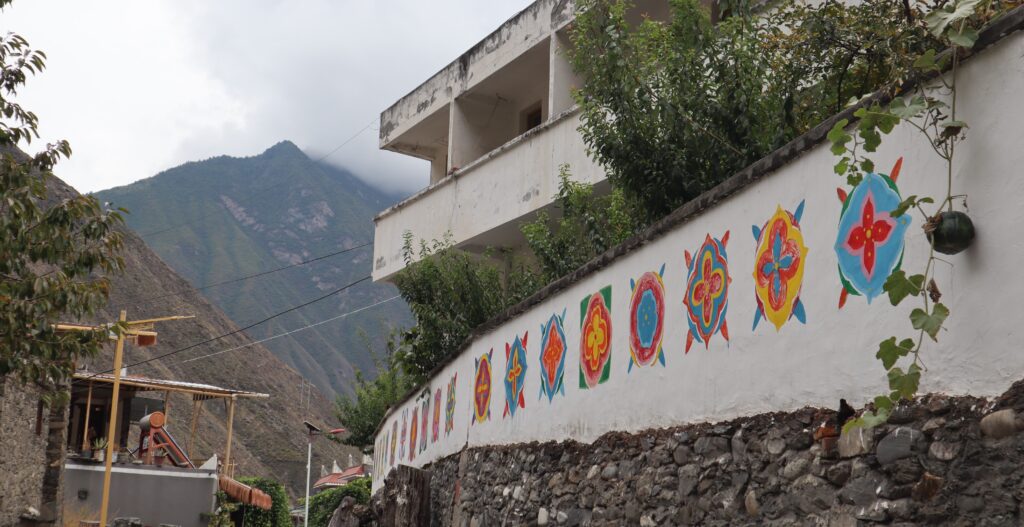
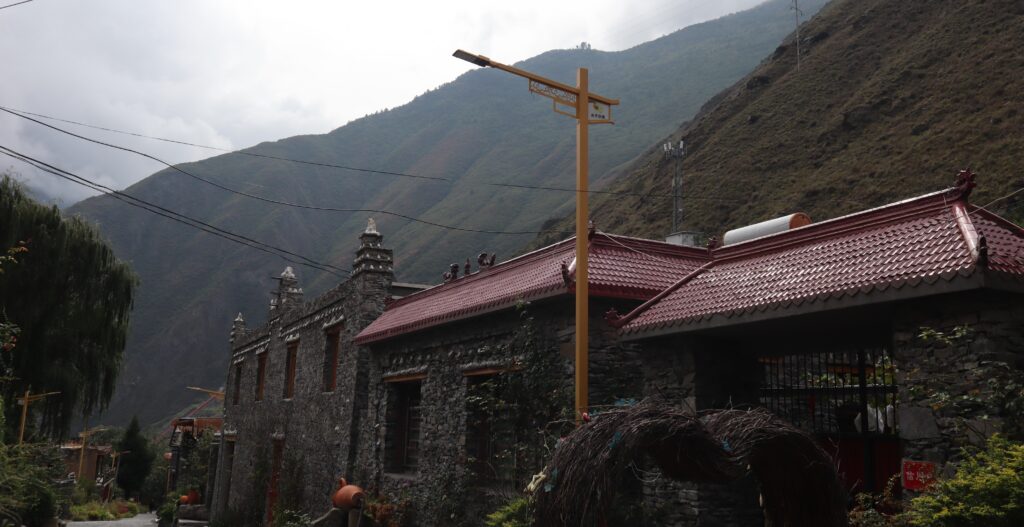

Scenery aside. Chibusu is another town on the map, and that is reason enough to visit and explore. I don’t arrive with any preview or expectation of what’s here. Whatever I see, I share. And I don’t see everything.
Water is the anointed theme of Chibusu. Turn head at any point and there is likely to be a stream or a creek running through or along. I’m not actually sure how clean and natural the water is, but I’m going to guess it’s mountain spring water. It’s a neat depiction. Water flows down from (or through) the mountains into various channels throughout the village, providing an essential resource in prevalence.
There is even signage (with English!) about how the water that flows through here is part of the “soul of the village”… Or something like that, I often neglect to photograph signs, so I’m just recalling the best I can. Personally, I think that’s about the case in any rural place, right- water is obviously always vital, critical. I guess here in the Sichuan mountains there is some kind of distinction. I have yet to uncover in what way.
On the water: the streams here flow from the Heishuihe (黑水河 or black water river), which meets the Minjiang (Min River) in central Maoxian. The map might suggest the Heishuihe is a tributary of the Minjiang. But it’s tough for me to be totally certain. And before any connections are made with other “black rivers”, it should be mentioned that commonality in Chinese names makes investigation a little confusing. Leaving me wondering if either of the “black rivers” of Gansu/Mongolia or Yunnan/Vietnam are at all related to this one (I don’t believe so). That’s quite a distance. Just another item that is likely common knowledge for a local. Though I can say with certainty, unsurprisingly, that this Heishuihe is prominent in Heishuixian (黑水县 or black water county), the county that sits just northwest of Maoxian. Right by this border is Chibusu of course.
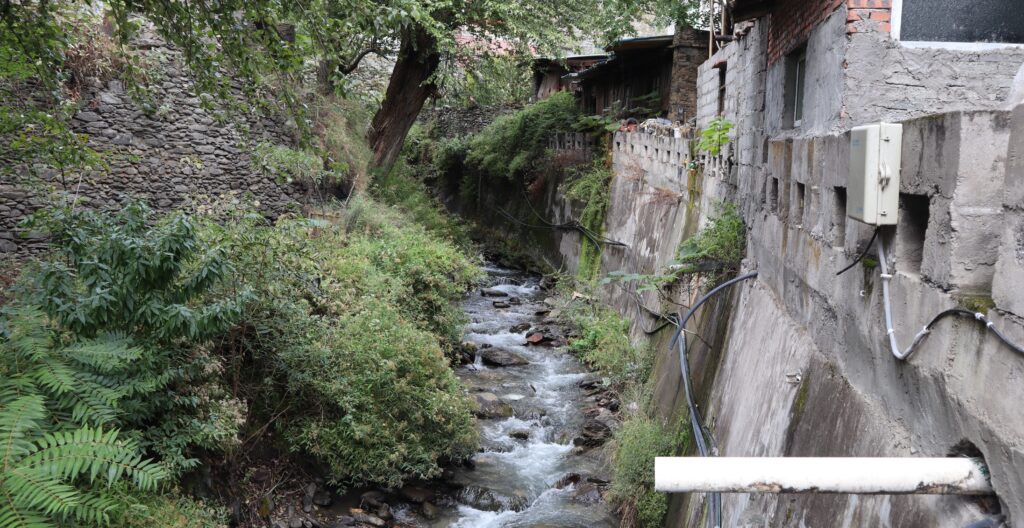
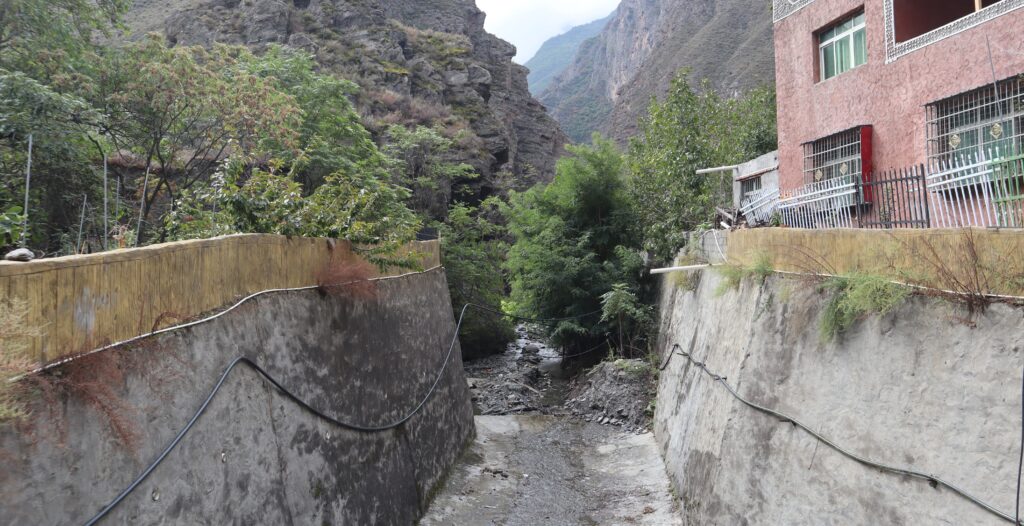
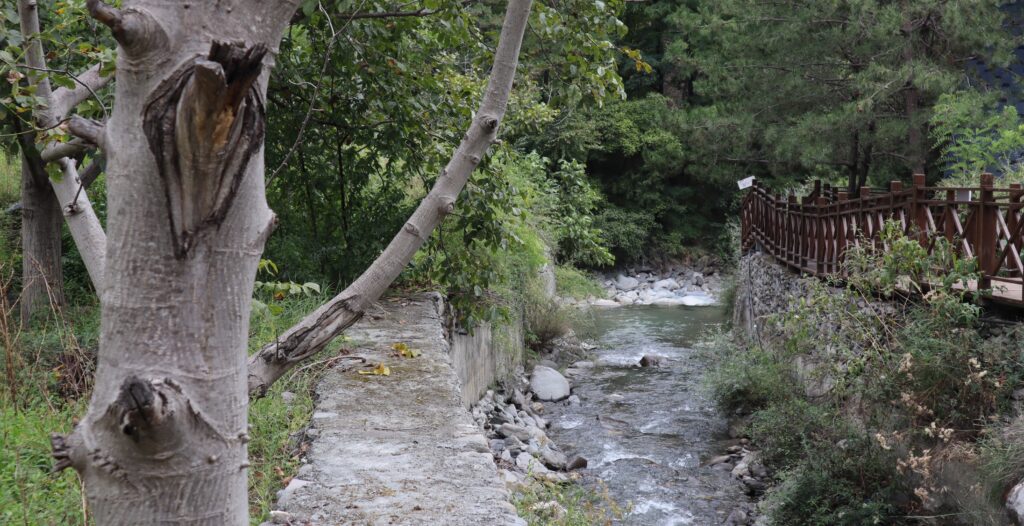

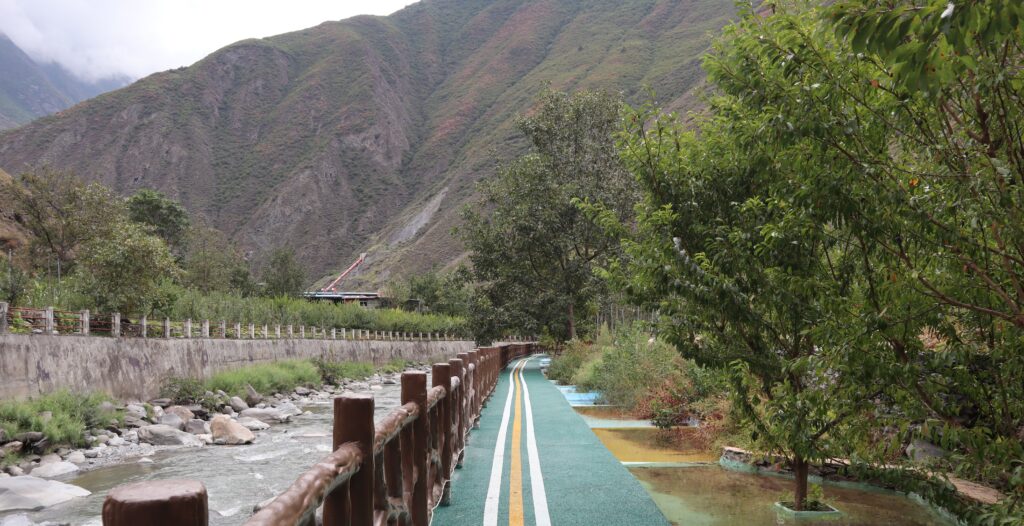
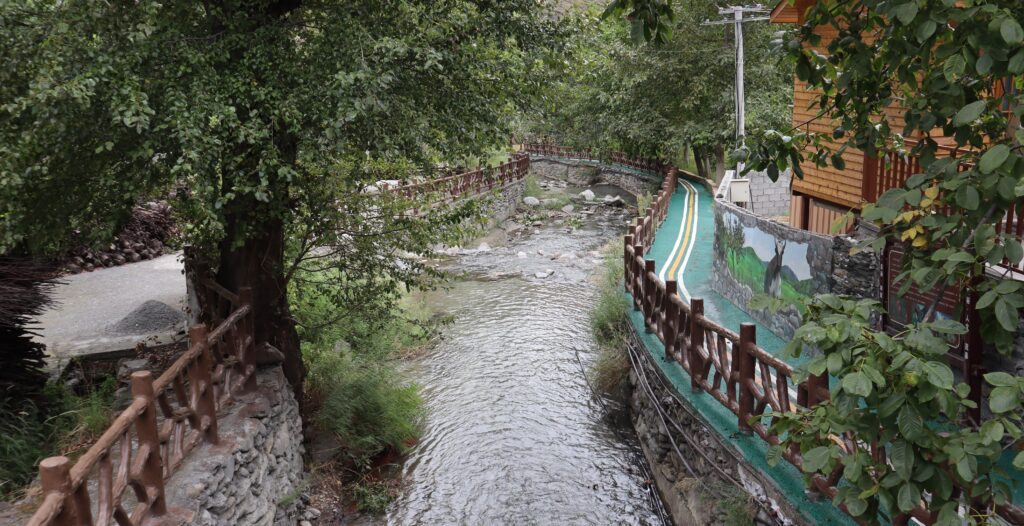
It’s hard to argue with the overall result. Whether it is because of some nourishing water or other force, there is a host of lush vignettes within the town, well beyond the visitor’s quarter. Paths and roads are inviting without giving too much away, if a bit overgrown in some places. For a rural town, it is hard to beat, in terms of visitor experience. I’d call it authentic (excluding that one tourist street), but I’m certainly not qualified to judge these things. I just like how it looks and feels. Additionally, the slightly arid mountains that surround Chibusu offer a bit of contrast (this was early October, mind you – but the mountains here seemed to be on “craggier” side). Looking afar at some of the hills, it appears there are even older structures still standing. But I didn’t get to see them up close.
Although, with a bit of curious probing, similar scenes are not so closed off. The flows have a way of segmenting (without limiting access completely) distinct parts of the town.

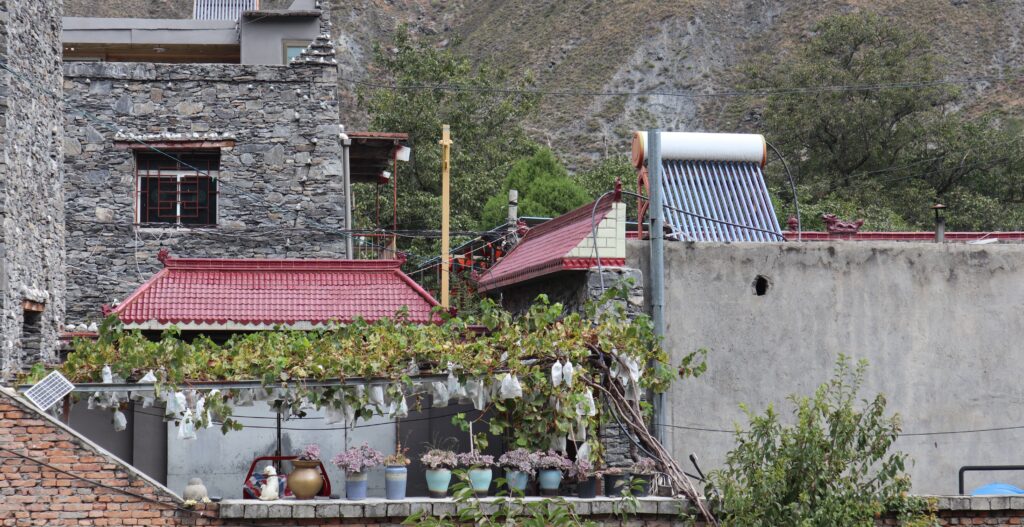
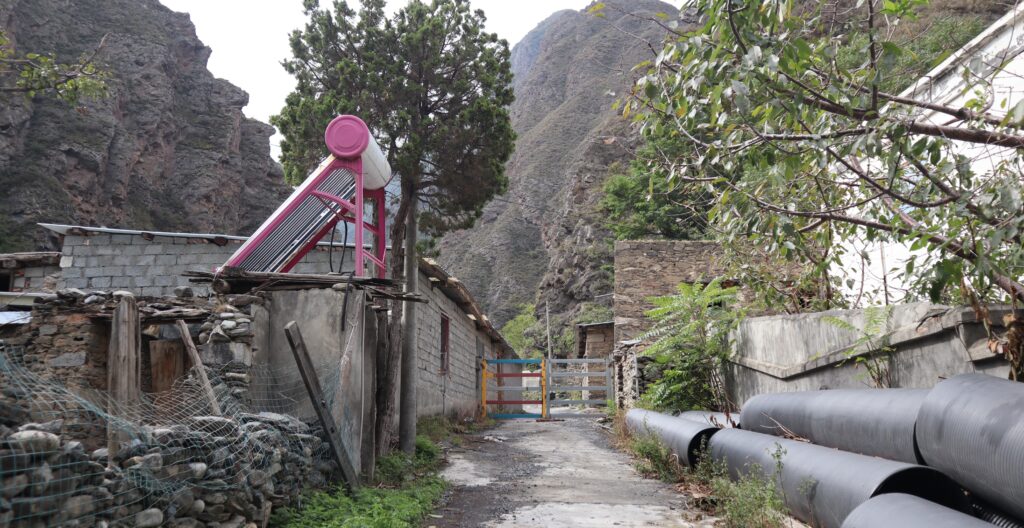
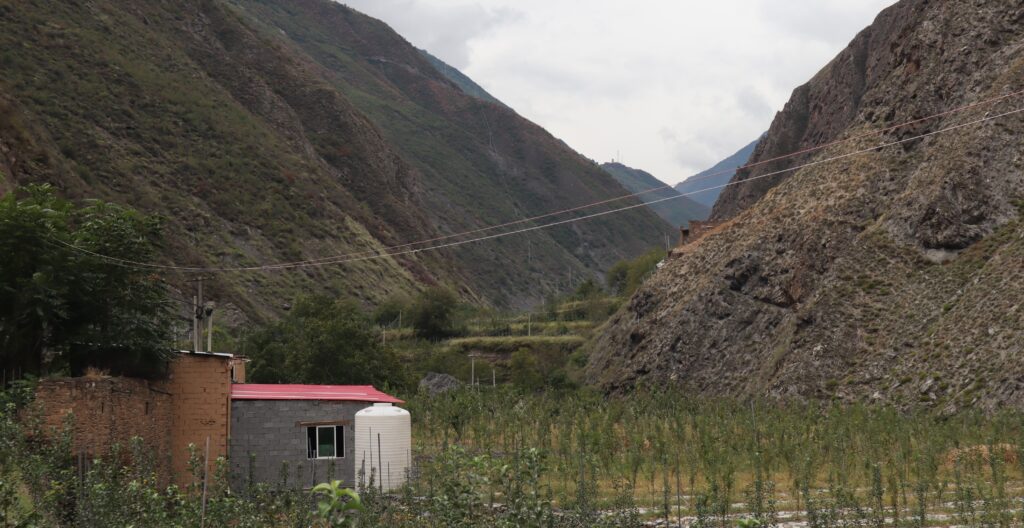
Now, at risk of revealing my banal nature, I was helplessly captivated by the volume of abandoned (or abandoned-looking) structures that were accessible. Very gritty and intriguing looking stuff. Excellent camera bait. While some structures appeared very departed from their original design, I noticed a few were reused as gardening or storage space. A former dwelling made of the usual stone, now no longer with a roof or half of its walls, might serve as a crude container for common materials, or a tiny plant plot. Or a nest for a cat.
Perhaps a testament to the strength of the buildings or the application of space. Though again, not my expertise.
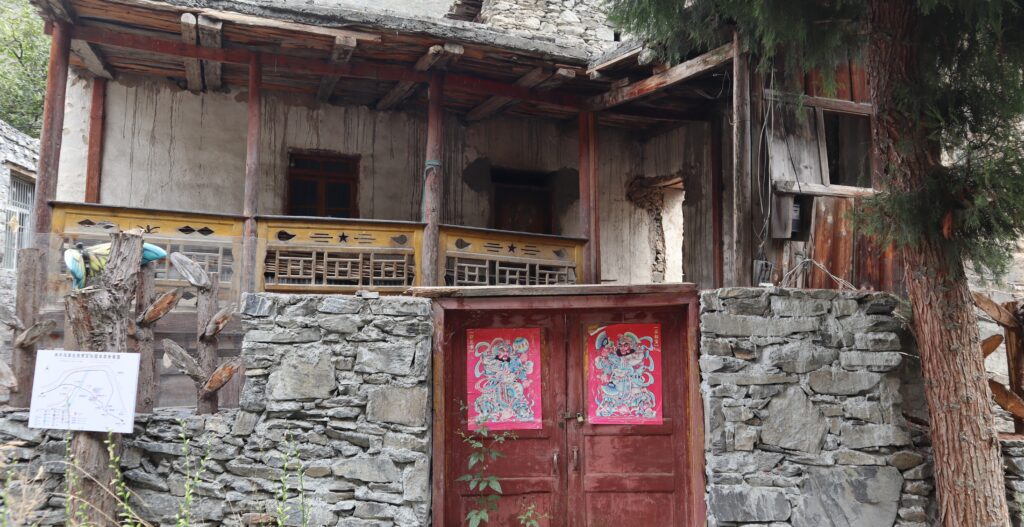

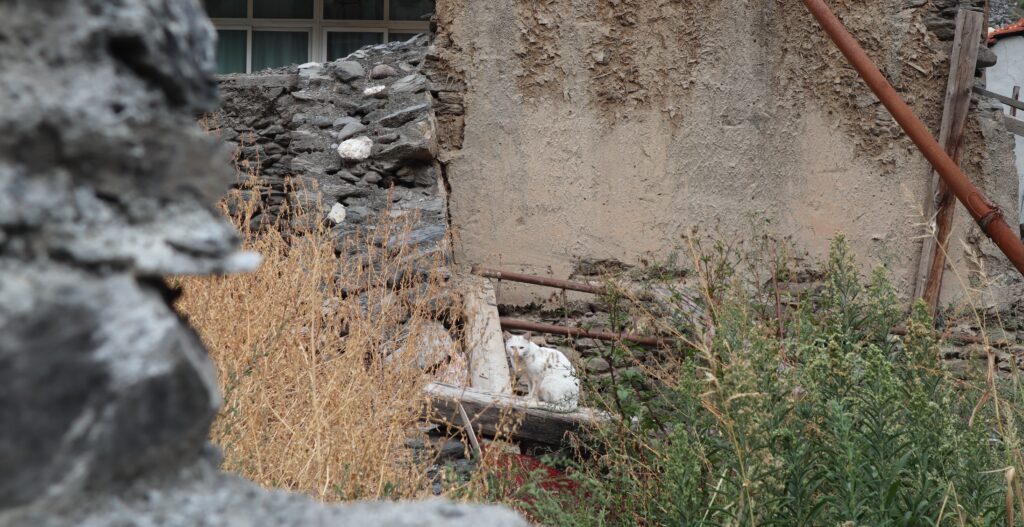

About two weeks prior to visiting Chibusu, I had reviewed an expert’s references on historical Qiang villages. While there are sort-of-ruins all over Sichuan, and China, and there are many examples of (lightly performative) Qiang style communities, there are indeed also particularly “prime” examples that manage make it into research books. In my limited trials, these are rather difficult to come across naturally. Even intentionally, they require some patience and effort to reach. Remote mountain locations, lack of road infrastructure, natural hazards.
The books, complete with much better photography and testimony, depict settlements, now mostly abandoned, that manage to look ancient and comprehensive and thematic, with the sort of mystical allure that requires little color and decoration. Genuine stone constructions, sweeping natural and rural settings, without the added displays and enhancements to wow visitors that have become so ubiquitous.
In Chibusu is one of the closest instances I have seen to those depictions. Crossing a small, shabby bridge over one of the town’s streams takes us to what materializes into seemingly a whole other neighborhood. The full view of it is obfuscated by trees and overgrown vegetation. I hesitate to call the neighborhood “historic”, as there are clear signs that some of the structures are still in use/inhabited. But their style is unmistakably, and remarkably, reminiscent of the sites researched in the books.
Unsurprisingly, the structures lining the immediate path are well preserved or maintained. But, though not always visible, there are a number of nearby aging foundations embedded in the mountains. I wish I knew when they were constructed.
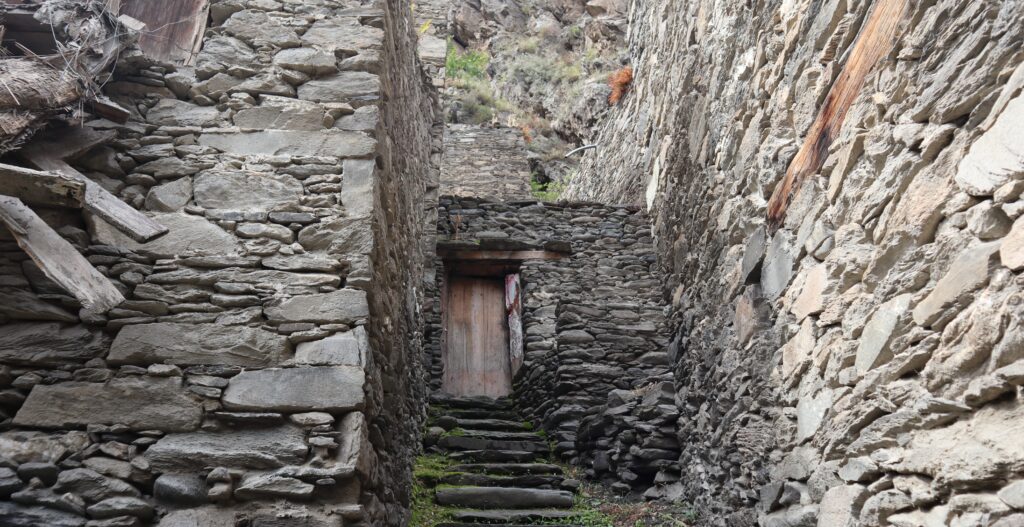
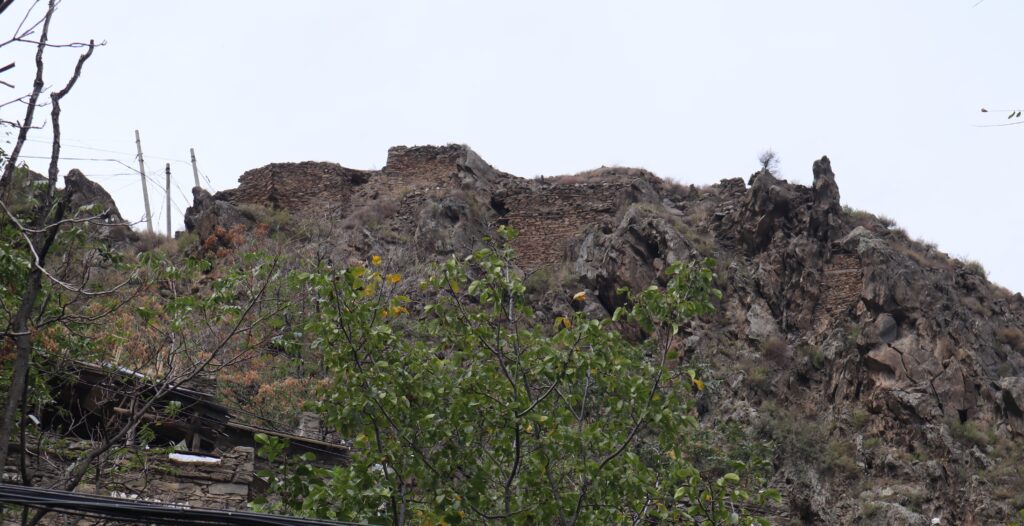

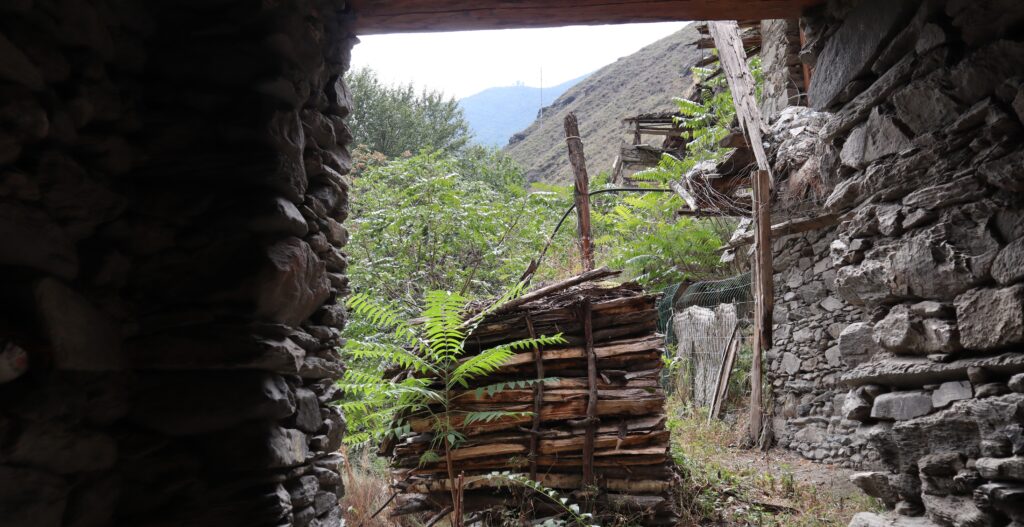


I do want to be a little cautious to avoid the notion that anything here is ancient. I don’t actually know. Partly because it takes more effort than I can give, and partly because the history of the country (and locally) is, I suspect, muddy with narrative re-imaginings. Though it’s also worth crediting national efforts (and local, again) to uplift these regions’ infrastructures. I suppose it’s rather tempting to try to compartmentalize what we see, so as to create “neighborhoods” that represent historic eras in a location. The idea that I can cross a bridge into a different zone is easy to understand and stimulating. But it’s not usually clear cut that way. Much of the time, especially so in active areas, it is a hodgepodge. And I think of activity as a scale, too. If a place is truly abandoned, you’d probably never find it.
There is little to say about the local people, who tend to be older, except that I hold them in high esteem. From my perspective, a difficult juggling act is in motion, between living private life in the mountains in a modern world (as it becomes increasingly enticing to move to urban areas), while having to maintain a degree of preservation and local heritage. It’s a tough act, and I think most people just leave, but those that stay are a big reason for these places being wonderful, accessible experiences.
Of course, I was aided and joined by three companions for this visit: Fuqiang, Gugu, and Xiaomeng. Only with their help did I get to see this place!
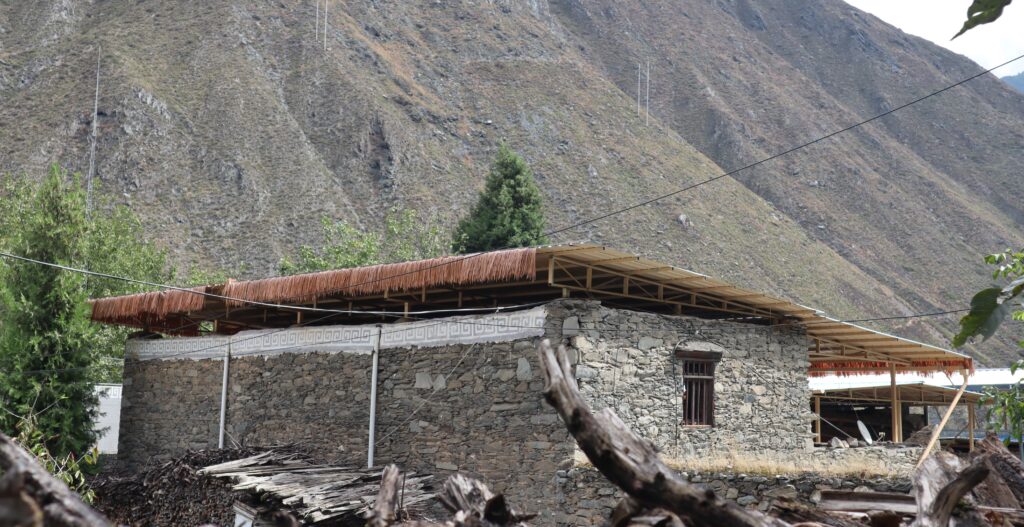

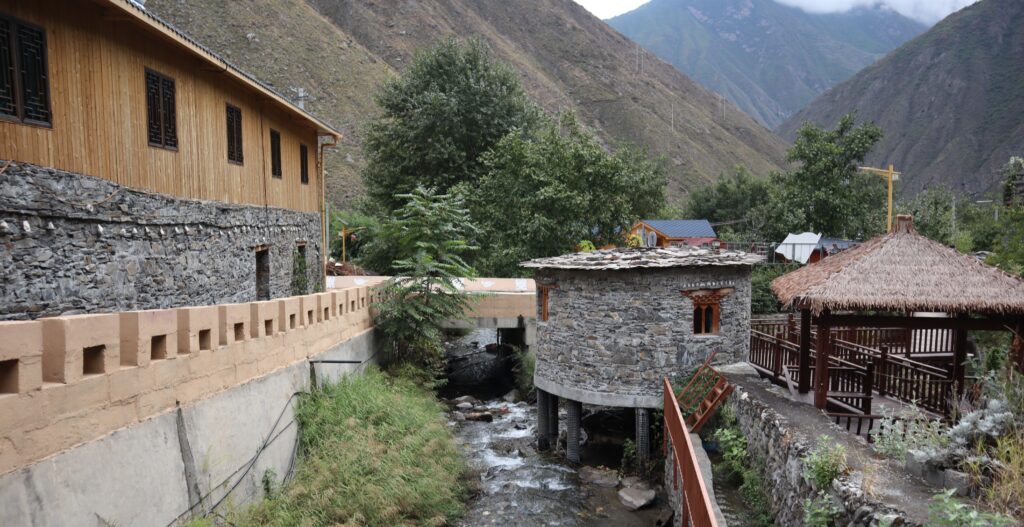
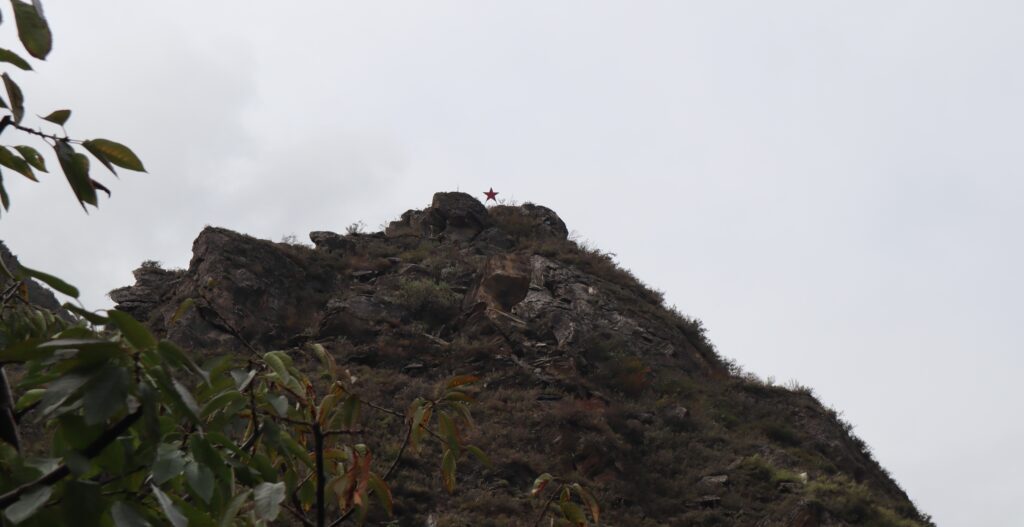
Plenty of art on the walls in the central area. Typically painted on a clay-colored plaster (?). Many of the newer structures throughout Maoxian follow this style.
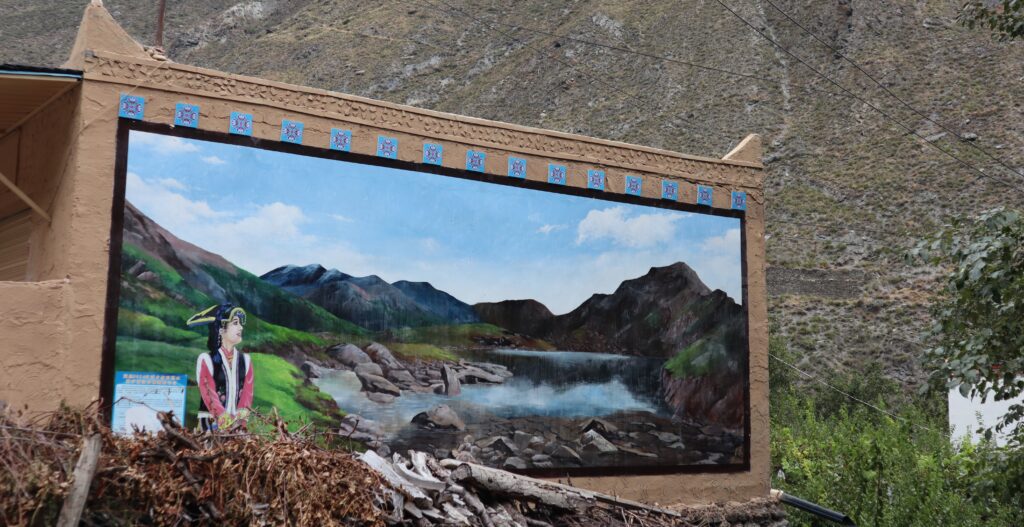
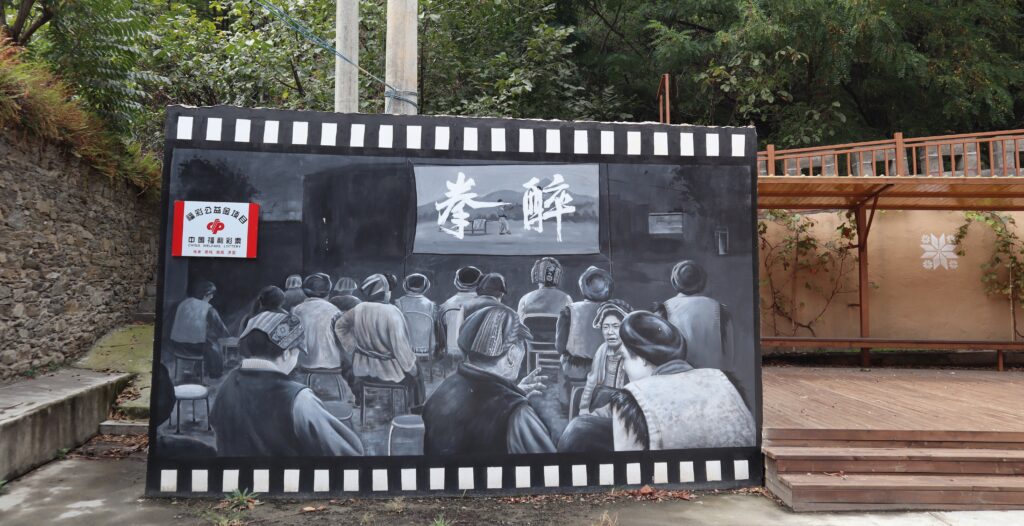
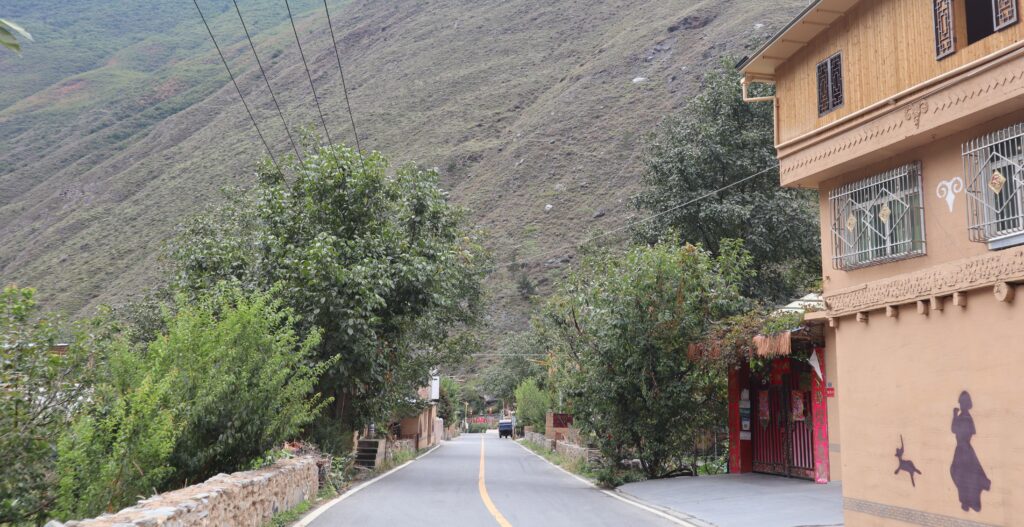

Lastly, a glimpse of some of the things are grown here.
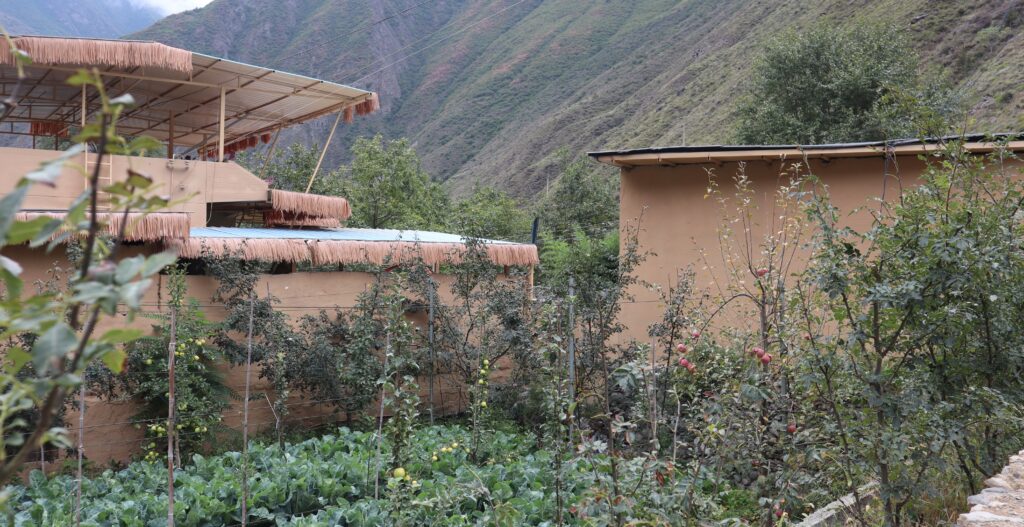
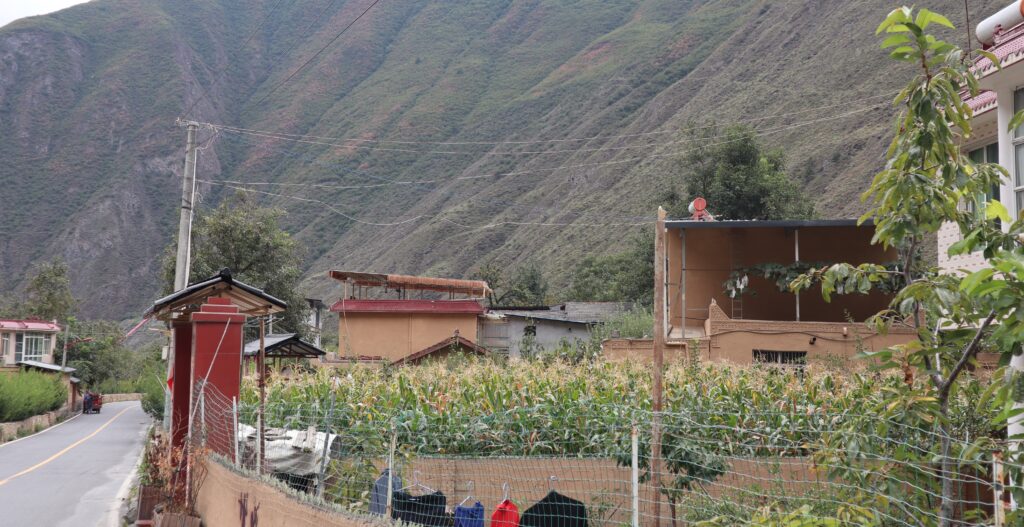
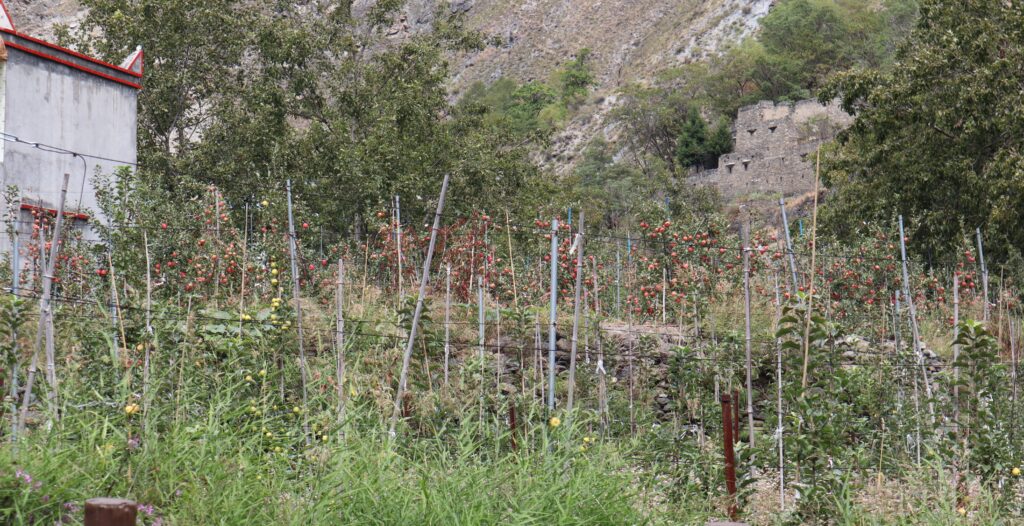
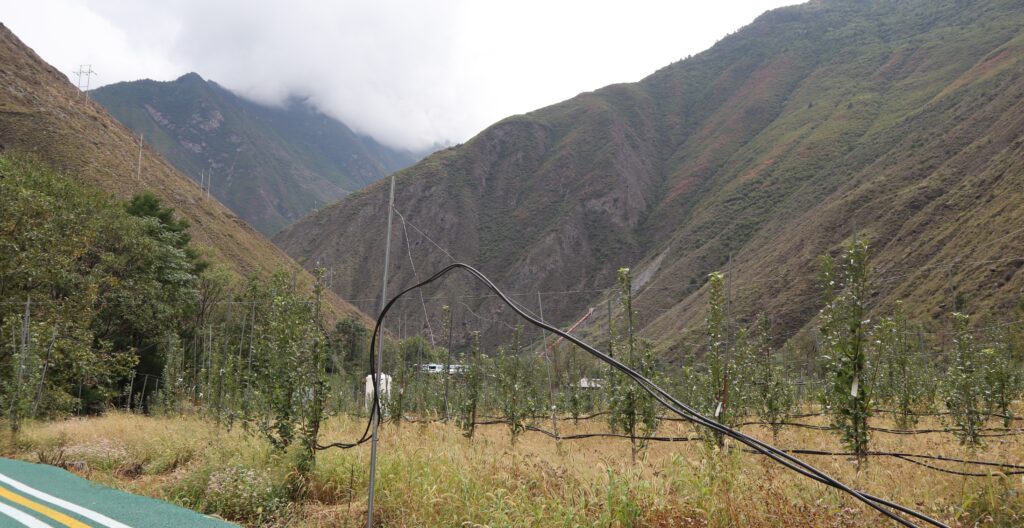


Leave a Reply